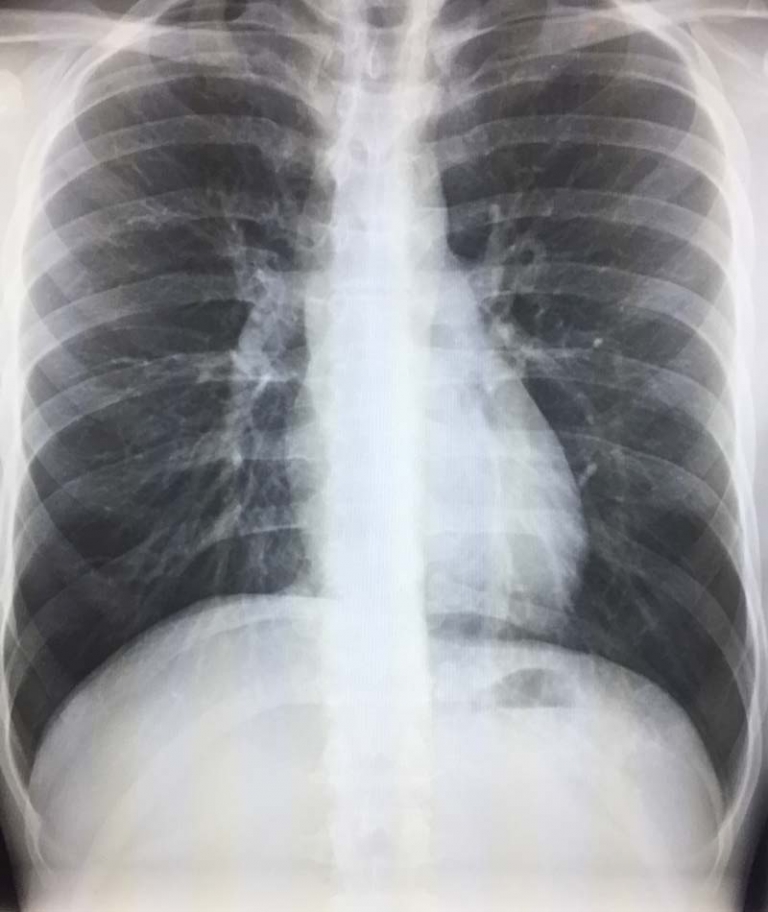Tracheal Shift On X-Ray And CT Scan
Tracheal shift means the trachea is shifted from its normal location in the midline. Tracheal shift is most commonly identified on X-rays and CT. Tracheal shift has many causes ranging from technical factors like patient rotation to diseases of the lungs.
What is tracheal shift?
The trachea or windpipe carries air from the larynx or voice box to the lungs. The trachea is normally located along the midline.
Tracheal shift means that the trachea has shifted from the midline. The trachea can shift to the left or right.
We can see the trachea shift on X-rays and CT. CT more often gives us the cause of the tracheal shift.
Symptoms of tracheal shift
Tracheal shift has many causes. The symptoms will depend on the cause of the shift. Causes like lung cancer or scarring may have few symptoms while a collapsed lung will often cause chest pain and breathlessness.
How is tracheal shift diagnosed?
Tracheal shift is most commonly diagnosed on X-rays and CT scans.
What does tracheal shift look like on x-ray?
Tracheal shift on X-ray will show the trachea shifted to the left or right of midline. We may see the cause of the shift as well.
What does tracheal shift look like on CT scan?
Tracheal shift on CT will show the trachea shifted to the left or right of midline. We often see the direct cause of the shift on CT.
What else can look like tracheal shift in radiology?
Tracheal shift has a characteristic appearance on imaging studies. Sometimes when the patient is rotated, there can be apparent shift of the trachea on X-ray. This is caused by the patient position and not an abnormality.
What causes tracheal shift?
The trachea can shift as a result of disease in the chest cavity.
Shift of the trachea towards the side of the abnormality can be caused by: a collapsed lung, lung scarring, and prior removal of a lung.
Shift of the trachea away from the abnormality can be caused by: fluid in the chest cavity (pleural effusion), collapsed lung under pressure (tension pneumothorax), a mass like cancer pushing on the trachea, and an enlarged thyroid pushing on the trachea.
Is tracheal shift dangerous?
Tracheal shift can be dangerous if it is caused by a life threatening condition. A collapsed lung with tension (tension pneumothorax) can be life threatening and needs urgent treatment.
Cancer pushing on the trachea can be life threatening. The trachea can also become narrowed and cause difficulties with breathing.
What type of doctor treats tracheal shift?
This depends on the cause. Urgent conditions like a tension pneumothorax may be treated by an emergency room doctor. Cancer will usually be treated by an oncology doctor and in some cases a surgeon. A lung doctor or pulmonologist may treat fluid in the chest cavity (pleural effusion).
Tracheal shift treatment
Treatment is always directed at the underlying cause of the tracheal shift. Some cases like lung scarring may not be treated. Other causes like a tension pneumothorax need urgent treatment.
Tracheal shift: summary
Tracheal shift is an imaging diagnosis most commonly seen on X-ray and CT. We will see the trachea shift to the left or right of midline. The causes are varied but most commonly due to disease in the chest cavity like fluid or a collapsed lung. Other causes can be cancer and an enlarged thyroid gland pushing on the trachea. Treatment is directed towards the underlying cause.

